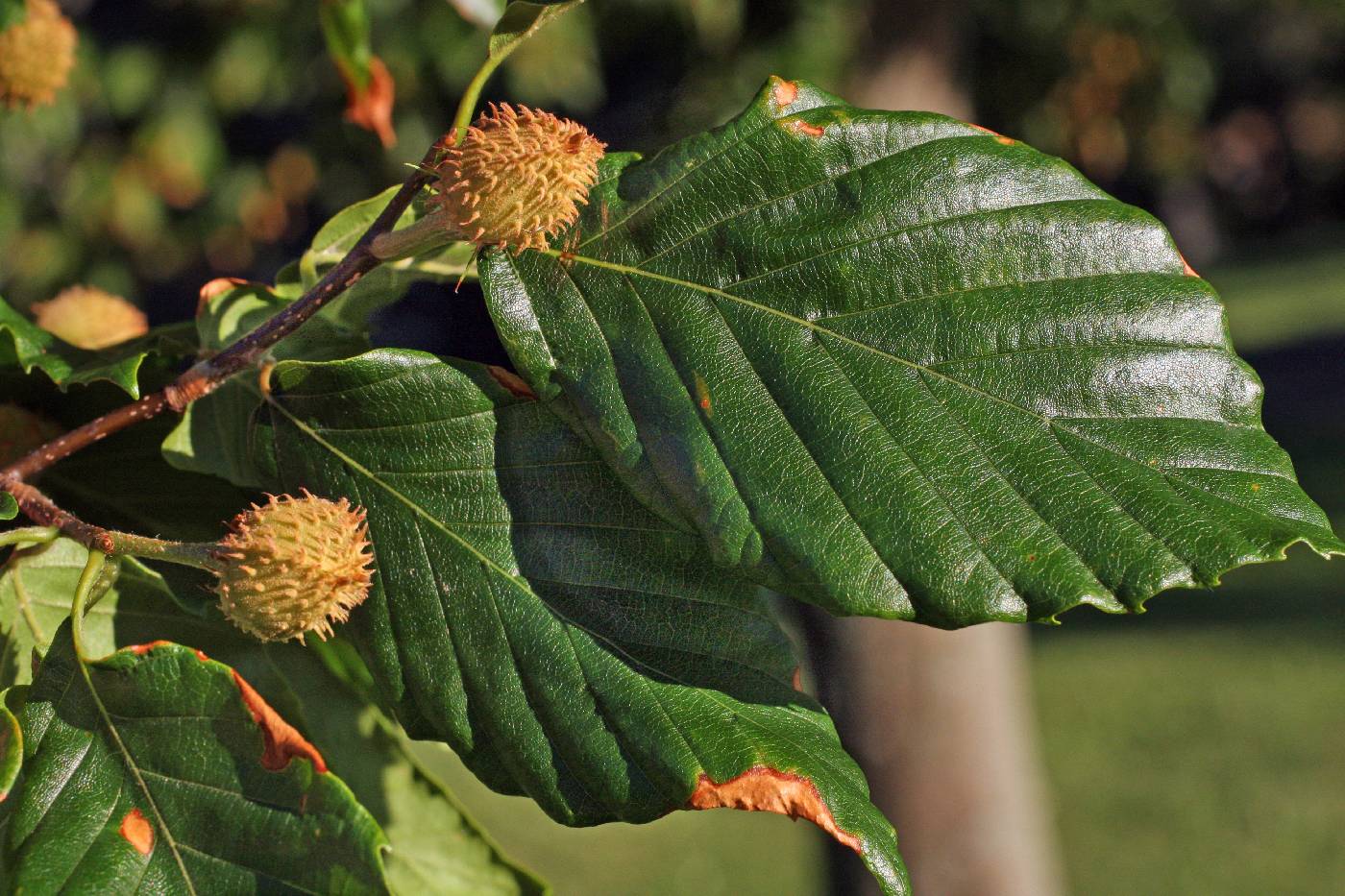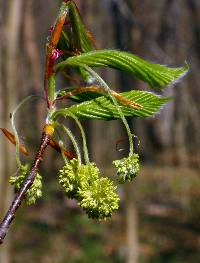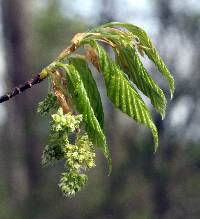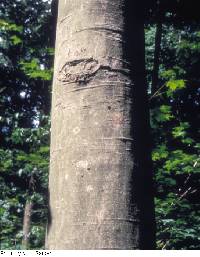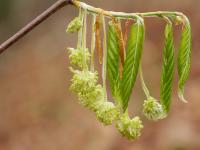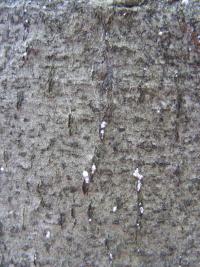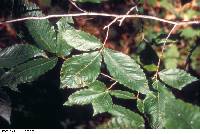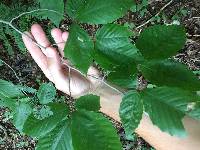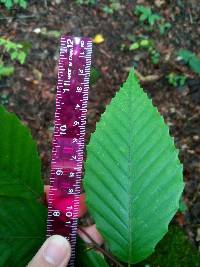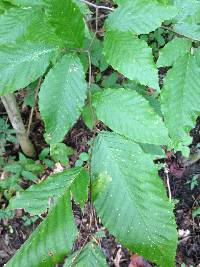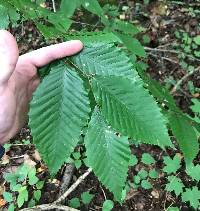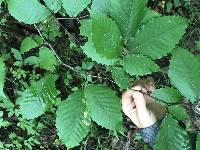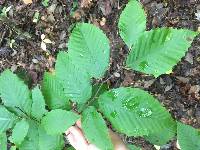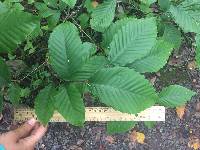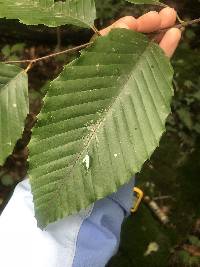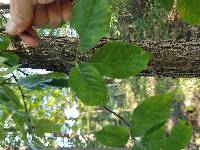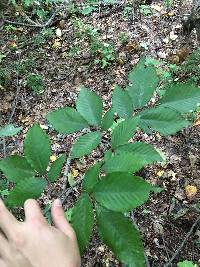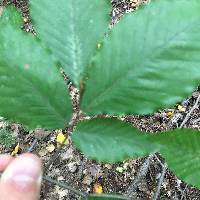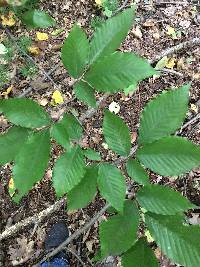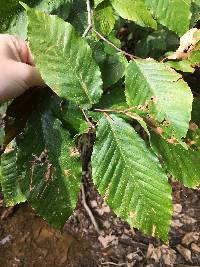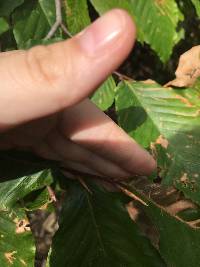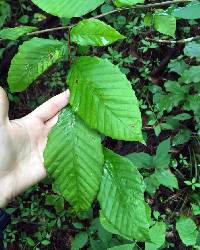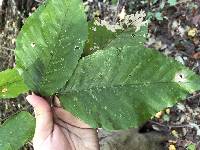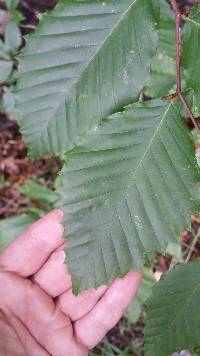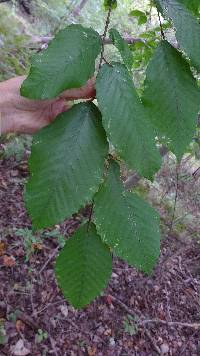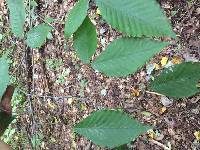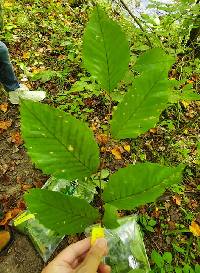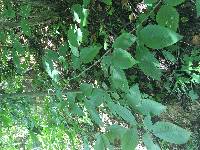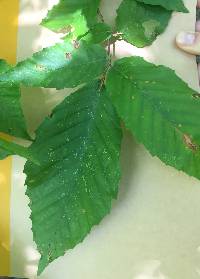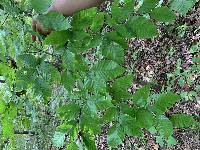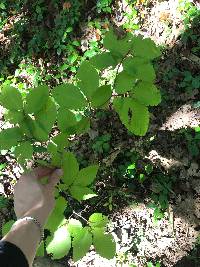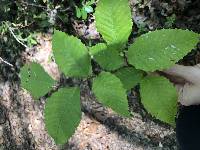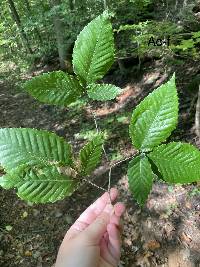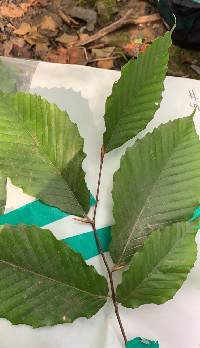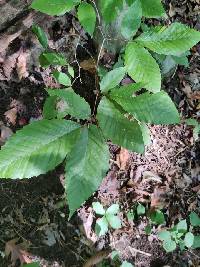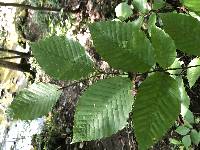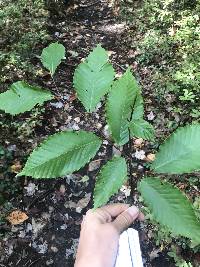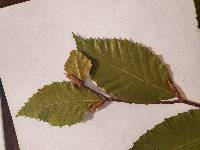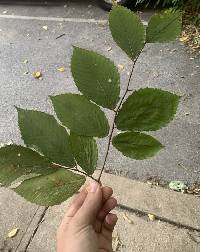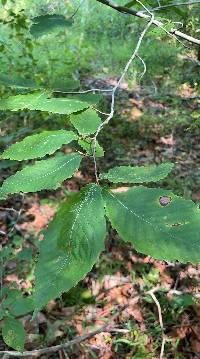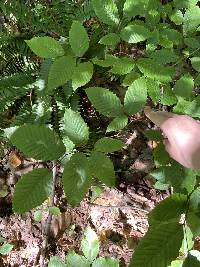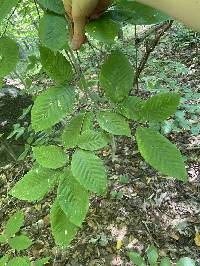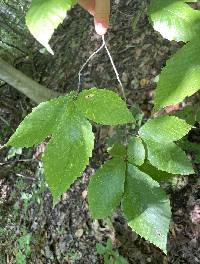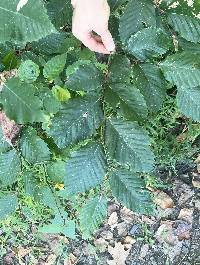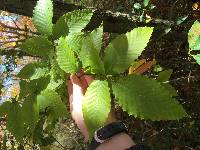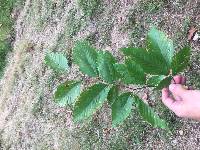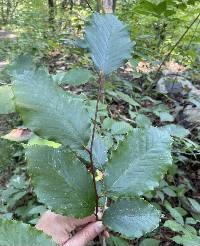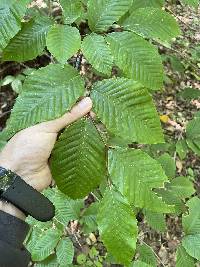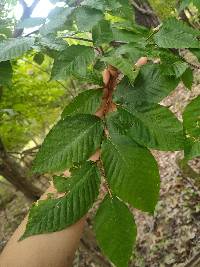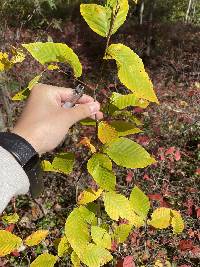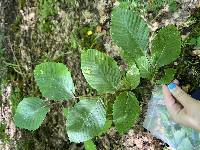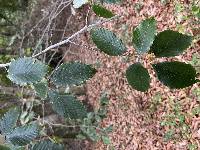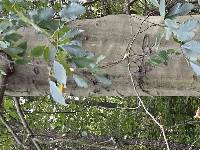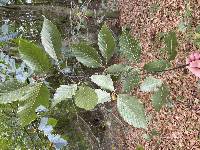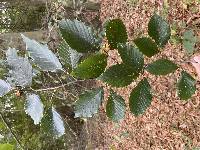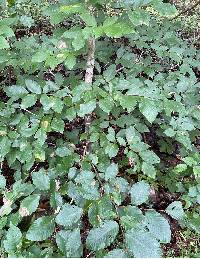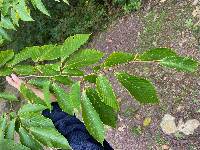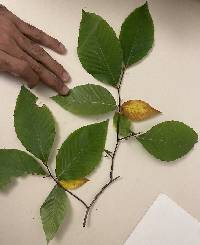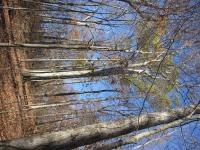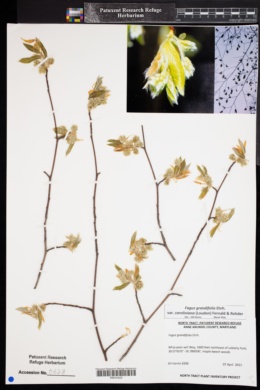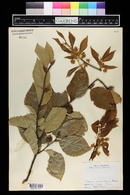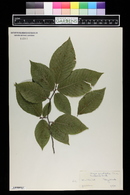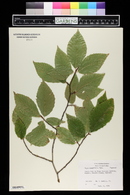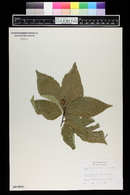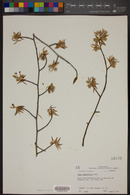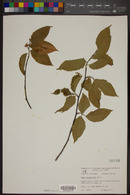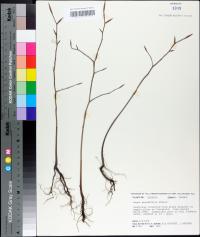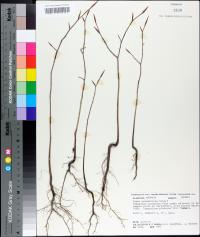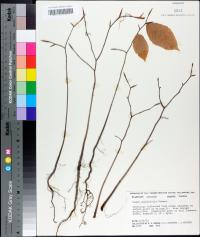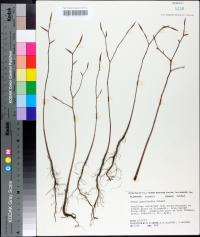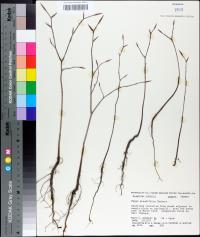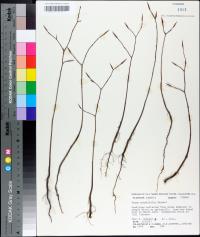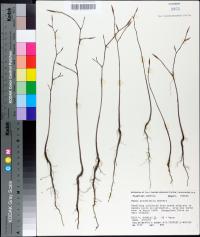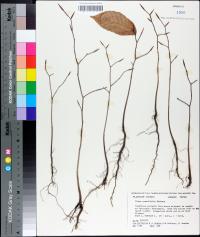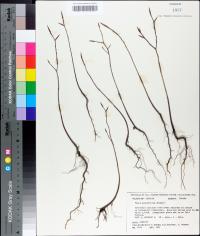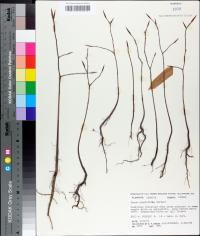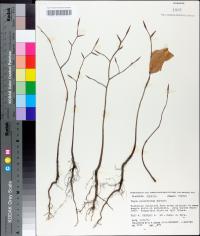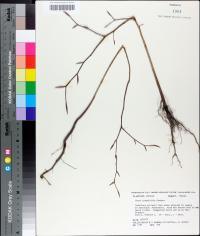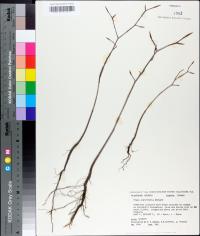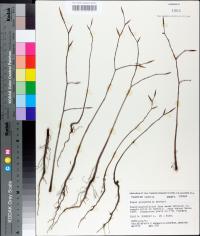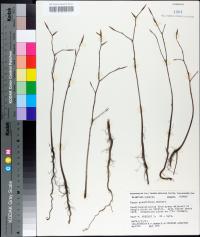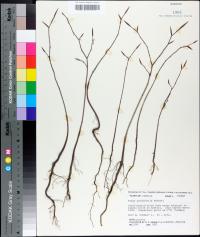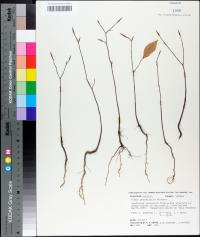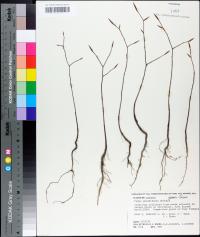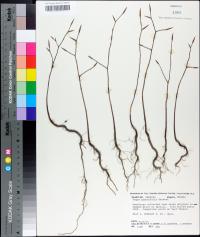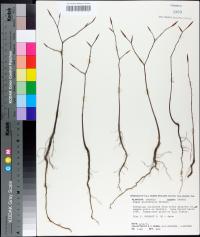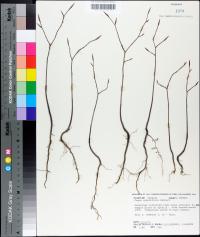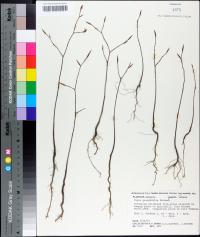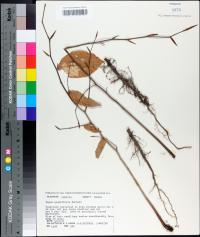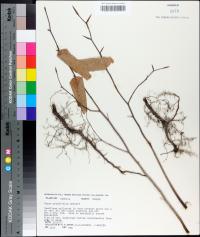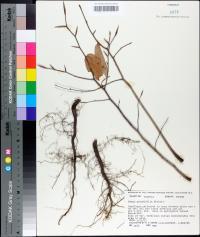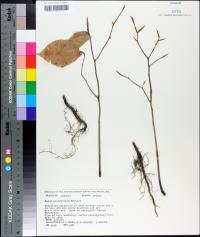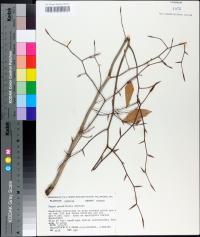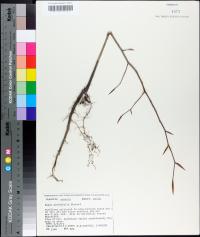
|
|
|
|
Family: Fagaceae
American Beech
[Fagus americana Sweet, moreFagus ferruginea Dryand., Fagus grandifolia subsp. grandifolia , Fagus grandifolia subsp. heterophylla , Fagus grandifolia var. caroliniana Fernald & Rehder, Fagus grandifolia var. grandifolia , Fagus virginiana] |
Trees , to 20(-30) m. Bark gray, smooth. Twigs glabrous at maturity, or with scattered, straight, silky, simple hairs, prominent ringlike bud scale scars at beginning of each year's growth. Buds narrowly fusiform, to 15-20 mm, apex acute, scales few, silky light brown or glabrous. Leaves: petiole 4-12 mm. Leaf blade ovate or narrowly ovate, rarely obovate, 60-120 × 25-75 mm, base cuneate or subacute, apex acuminate; surfaces abaxially with scattered straight silky hairs, these often concentrated on midrib, occasionally glabrous or much more villous. Fruits: cupule brown to reddish brown, 15-20(-25) mm, opening at maturity to reveal nuts; nut 15-20 × 10-18 mm wide, glabrous or puberulent, often hollow even when full-sized. Flowering spring (Apr-Jun). Rich woods, deciduous forest and mixed broadleaf-conifer forest; 0-1000 m; N.B., N.S., Ont., P.E.I., Que.; Ark., Ala., Conn., Del., Fla., Ga., Ill., Ind., Ky., La., Maine, Md., Mass., Mich., Miss., Mo., N.H., N.J., N.Y., N.C., Ohio, Okla., Pa., R.I., S.C., Tenn., Tex., Vt., Va., W.Va., Wis. A. J. Rehder (1907) argued for recognition of a southern variety ( Fagus grandifolia var. caroliniana ) of this somewhat variable species. The northern populations in general are characterized by cupules with denser, longer prickles, somewhat narrower leaves with a greater proportion of cuneate leaf bases, and larger fruits that exceed the cupules slightly. Others (e.g., W. H. Camp 1951) have suggested the existence of three races within United States F . grandifolia , often referred to as gray beech, red beech, and white beech. I follow J. W. Hardin and G. P. Johnson (1985) and others in not recognizing subspecific or varietal variation within eastern United States F . grandifolia . Examination of material over the geographic range of the species suggests that this variation is broadly clinal and can only be demonstrated statistically, with much variation indicative of the other races within most populations. It seems a matter of taste as to whether such variation be recognized with infraspecific names. In addition, forms with more densely pubescent leaves occur locally in both the north and south; they have been formally recognized by some authors. Clearly, additional taxonomic work on variation in F . grandifolia is desirable; it is possible that other characters that could adequately delimit subgeneric/varietal taxa might yet be identified. Fagus sylvatica Linnaeus, the European Beech, is cultivated in temperate eastern North America and to a lesser extent in western United States and Canada. Escapes are to be expected. Various cultivars are known, particularly purple-leaf, tricolor-leaf, and cut-leaf forms. When encountered, F . s ylvatica is easily distinguished from F . grandifolia by the crenate leaf margin (without distinct teeth) and the softer, less stout, less reflexed spines of the cupule of F . sylvatica . Native Americans used various preparations from plants of Fagus sylvatica medicinally for worms, consumption, chancre, and heart trouble, to purify the blood, as a poultice for burns and scalds, and as a wash for poison ivy (D. E. Moerman 1986).
Tree 18 - 28 m tall, trunk 0.5 - 1.2 m in diameter Leaves: alternate, short-stalked, shiny dark green to bluish green above, yellowish green beneath, 7 - 12 cm long, 3 - 6 cm wide, oblong to egg-shaped with a short-pointed tip, coarsely toothed, with nine to fourteen vein pairs. Leaves turn yellow to bronze in fall, often persisting into winter. Flowers: either male or female, found on the same tree (monoecious). Male flowers hang from long stalks in yellowish green spherical heads 2 cm wide. Female flowers in spikes of two to four or near base of a male flower head. Fruit: consisting of one or two edible nuts enclosed in a four-parted husk. The husk is covered by recurved prickles, splits to release nuts, and persists on the stem. Nuts reddish brown, 1 - 2 cm long, three-winged. Bark: bluish gray to ash gray, smooth, sometimes with darker patches. Buds: shiny and olive green, becoming brown to silver gray. Form: broad and rounded with a short, thick trunk and low branches. Similar species: Fagus sylvatica and Fagus grandifolia are very similar in appearance. The simplest way to distinguish the two species is by the leaves. The leaves of F. sylvatica have five to nine pairs of veins and wavy to finely toothed margins. Flowering: late April to late May Habitat and ecology: This species is most commonly located in the eastern counties of the Chicago Region and often inhabits ravines, old dunes, and mesic sites. Occurence in the Chicago region: native Notes: The smooth bark of F. grandifolia is often damaged by the carving of initials or designs into the trunk, which provides entry wounds for pests and pathogens and can harm the vascular system. The passenger pigeon, now extinct, used to feed on the fallen nuts. Today, many other species such as blue jays, squirrels, titmice, woodpeckers, nuthatches, and grosbeaks use the nuts as a food source. Etymology: Fagus is the Latin word for beech. Grandifolia comes from the Latin words meaning "large leaves." Author: The Morton Arboretum Tree to 30 m, with smooth, gray bark; lvs short-petioled, ovate to oblong-obovate, densely silky when young, later glabrous above, usually remaining silky at least on the midvein beneath; winter-buds elongate, slender, sharp, mostly 1.5-2.5 cm. N.S. to n. Fla., w. to Wis., e. Ill., se. Mo., e. Okla. and e. Tex. Var. grandifolia, red b., northern, occurring on rich upland soils throughout most of our range, usually has sharply serrate lvs, and the prickles of the fr are 4-10 mm, erect to spreading or recurved. Var. caroliniana (Loudon) Fernald & Rehder, white b., more southern, occurring on moist or wet lowland soils especially on and near the coastal plain, n. to Mass., s. O., Ill., and Mo., has usually more markedly acuminate, often merely denticulate lvs, and the prickles of the fr are 1-3(-4) mm, mostly abruptly reflexed from near the base. A third phase, sometimes called gray b., growing at the margins of the spruce-fir forest, s. even to N.C., differs from the other two in that the segments of the cupule do not cover the nutlets at maturity; unlike the others, it tolerates calcareous soil Gleason, Henry A. & Cronquist, Arthur J. 1991. Manual of vascular plants of northeastern United States and adjacent Canada. lxxv + 910 pp. ©The New York Botanical Garden. All rights reserved. Used by permission. From Flora of Indiana (1940) by Charles C. Deam Found in every county of the state except probably Benton, Jasper, and Newton Counties. It is a frequent to common tree throughout the lake and Tipton Till Plain areas on the ridges and hills unless these are sandy or a hard clay when they will be covered more or less with black and white oaks and hickories. In the unglaciated area it is also frequent to common but is usually found in the coves or on low hills. The higher hills with their poorer soil are usually covered with oaks and hickories. In the "flats" of the Illinoian drift it is found in low, flat woods where it is the principal species, associated with sweet gum, black gum, red maple, and oaks. Its most constant associate in the northern and central part of the state is the sugar maple. ...... Indiana Coefficient of Conservatism: C = 8 Wetland Indicator Status: FACU Deam (1932): Specimens with the habit of retaining their branches which lop downward, usually have thicker sap wood and are harder to split. This form is popularly styed the white beech. The form wih smooth tall trunks with upright branches usually has more heart wood, splits more easily and is popularly distinguished as red beech. The term yellow beech is variously applied. This species is a large tree in all parts of the state, although the largest specimens are found in the southeastern part of the state. In the virgin forests trees almost 1 m in diameter and 30 m high are frequent. Beech was formerly used only for fuel, but in the last few decades it has been cut and used for many purposes, and the supply is fast diminishing. The beauty of this tree both in summer and winter, subshine or storm, makes it one of the most desirable for shade tree planting, but I have failed to find where it has been sucessfully used. It is one of the few trees that do not take to domestication. When the original forest is reduced to a remnant of beech, as a rule, the remaining beech will soon begin to die at the top. It is difficult to transplant. When planted the hole should be filled with earth obtained from under a living beech tree, in order to introduce the mycorrhiza that is necessary to the growth of the tree. |
|
|
|

